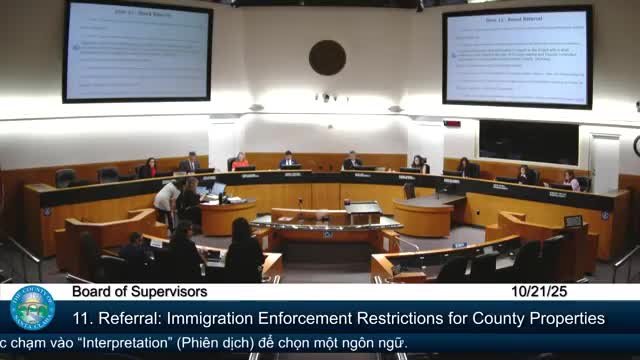Report on the Economic Impact of Trade Policies on the U.S. Agricultural Sector and Alignment with Sustainable Development Goals
Introduction: Agricultural Sector Under Duress
Minnesota’s agricultural sector is experiencing significant economic distress stemming from an ongoing U.S.-China trade war. This situation has prompted calls for a federal bailout package to support farmers facing financial instability. Stakeholders, including agricultural leaders and government officials, acknowledge the need for immediate financial relief while emphasizing that such measures do not constitute a long-term solution. This report analyzes the crisis through the lens of the United Nations Sustainable Development Goals (SDGs), examining the economic pressures, proposed interventions, and their alignment with global sustainability targets.
Analysis of Economic Hardship and SDG Implications
The current crisis is characterized by a combination of persistently low crop prices and rising input costs, both directly linked to tariff policies. This economic pressure has profound implications for several SDGs.
- SDG 1 (No Poverty) & SDG 8 (Decent Work and Economic Growth): The financial viability of farming operations is under threat, jeopardizing the livelihoods of farmers and the economic stability of rural communities. The trade war undermines the principles of decent work and sustainable economic growth within a critical sector.
- SDG 2 (Zero Hunger): While not causing immediate food shortages, the disruption to a major food-producing sector impacts the stability and predictability of the global food system. Ensuring the economic health of farmers is fundamental to achieving long-term food security.
- SDG 12 (Responsible Consumption and Production): The loss of established export markets, particularly the Chinese soybean market, disrupts sustainable patterns of production. Farmers are producing crops without a stable end market, creating economic inefficiency and uncertainty.
- SDG 17 (Partnerships for the Goals): The trade conflict represents a breakdown in international cooperation and trade partnerships. Agricultural leaders have expressed a strong preference for restoring these global markets, which they have spent decades developing, underscoring the importance of international partnerships for sustainable development.
Proposed Short-Term Interventions vs. Long-Term Sustainability
The primary response under consideration is a government bailout, which has been described as both a necessary “bridge payment” and a temporary “Band-Aid.”
- Immediate Relief: Governor Tim Walz and Dan Glessing, president of the Minnesota Farm Bureau Federation, concur that while financial aid is appreciated and necessary to navigate the immediate crisis, it is not a permanent fix. The Trump administration initiated aid distribution from a U.S. Department of Agriculture fund to provide this short-term support.
- Call for Sustainable Solutions: Industry leaders, including Darin Johnson of the Minnesota Soybean Growers Association, advocate for a return to stable, open markets. The consensus is that sustainable economic viability depends on “free trade and a fair price,” not on government subsidies. This aligns with the objective of SDG 8 to promote inclusive and sustainable economic growth.
- Policy-Induced Instability: Critics like Gary Wertish, president of the Minnesota Farmer’s Union, note that the crisis is a “self-inflicted” result of national trade policies, highlighting a conflict between political strategy and the economic stability required to meet sustainable development targets.
Funding Mechanisms and Institutional Challenges
The administration is considering several sources to fund a more comprehensive bailout, each presenting challenges that reflect on the strength and capacity of institutions (SDG 16: Peace, Justice and Strong Institutions).
- The Commodity Credit Corporation (CCC): This fund was used previously to provide $28 billion in aid during the 2018-2019 trade war. However, its current resources are diminished and face competing demands from expanded farm bill programs, potentially limiting its capacity to fully cover current losses.
- Tariff Revenue: The use of revenue collected from tariffs has been proposed. This approach faces legal and procedural hurdles, as Congress may need to authorize its use, and the legality of the tariffs themselves is under review by the U.S. Supreme Court.
- Customs Duties Fund: A longstanding fund collected from duties on agricultural imports exists but is primarily designated for producers not covered by other programs and for emergency child nutrition programs like WIC. Its annual cap for other farm aid is approximately $350 million, an amount insufficient to address the scale of the current losses.
The ability of the government to assemble a sufficient aid package demonstrates the institutional challenges in responding to policy-induced economic shocks while maintaining fiscal responsibility and adhering to legal frameworks.
Analysis of Sustainable Development Goals in the Article
SDG 2: Zero Hunger
This goal is relevant as the article focuses on the economic stability and livelihoods of farmers, who are the primary food producers. The trade war directly impacts their income and ability to continue producing food, which is fundamental to achieving zero hunger and ensuring food security.
-
Target 2.3: Double the agricultural productivity and incomes of small-scale food producers.
The article directly addresses the financial distress of Minnesota farmers, whose incomes are threatened by the trade war. The discussion revolves around “persistently low crop prices and rising input costs,” which negatively impact farmer incomes. The government “bailout package” and “hardship payments” are direct responses to the severe drop in income experienced by these food producers.
- Indicator: The amount of financial aid provided to farmers as a measure of income loss. The article mentions “$28 billion” paid out during the 2018-2019 trade war and an additional “$3 billion” being distributed.
- Indicator: The level of crop prices, which the article describes as “persistently low.”
- Indicator: The cost of agricultural inputs. The article notes that “Tariffs impact prices on fertilizers, farm equipment and other input costs,” directly affecting farmers’ net income.
-
Target 2.c: Adopt measures to ensure the proper functioning of food commodity markets and limit extreme food price volatility.
The article’s central theme is the disruption of agricultural commodity markets due to the “ongoing U.S.-China trade war.” The imposition of tariffs and “retaliatory duties on soybeans, corn, wheat” has distorted the market, leading to price instability and the loss of established trade relationships. Farmers express a desire to “restore markets that farmers spent years or even decades establishing.”
- Indicator: The existence and scale of tariffs and retaliatory duties on agricultural products, which disrupt the normal functioning of markets.
- Indicator: The loss of major export markets. The article states, “China has found new suppliers besides Brazil for soybeans and other farm products it once imported from the United States,” indicating a severe market disruption.
SDG 8: Decent Work and Economic Growth
The economic fallout from the trade war on the agricultural sector is a key focus. The financial instability faced by farmers threatens their work and the economic health of rural communities, thereby impacting broader economic growth.
-
Target 8.1: Sustain per capita economic growth.
The article highlights how the trade war is causing significant economic harm to a vital sector of the U.S. economy. The need for a multi-billion dollar “bailout package” demonstrates a significant economic shock that detracts from sustainable economic growth. The losses are described as likely to “exceed that $28 billion,” indicating a substantial negative economic impact.
- Indicator: The total value of government bailouts required to support the agricultural sector, mentioned as “$28 billion” previously and “$3 billion” currently, which signifies the scale of economic damage.
- Indicator: The overall financial losses incurred by farmers due to trade policies.
SDG 17: Partnerships for the Goals
This goal, particularly its trade-related targets, is highly relevant. The article describes a breakdown in international trade cooperation, moving away from the goal of a stable and equitable global trading system.
-
Target 17.10: Promote a universal, rules-based, open, non-discriminatory and equitable multilateral trading system.
The article details the opposite of this target, describing an “unnecessary trade war” characterized by unilateral tariffs and retaliatory actions. This situation undermines the principles of a rules-based and open trading system. The farmers’ stated preference for “free trade and to be able to just get a fair price for the product we’re growing” is a direct call for the principles outlined in this target.
- Indicator: The existence of a “trade war,” which is a qualitative indicator of the breakdown of a rules-based trading system.
- Indicator: The imposition of unilateral tariffs and “retaliatory duties” on goods like soybeans, corn, and wheat.
-
Target 17.11: Significantly increase the exports of developing countries.
While the article focuses on a developed country, the principle of maintaining and growing export markets is central. The U.S. farmers have experienced a significant decrease in their exports due to the loss of the Chinese market. The article notes that “China has found new suppliers,” which implies a shift in global trade flows away from the U.S., directly impacting its export volumes and the livelihoods dependent on them.
- Indicator: The loss of a primary export market (China) for key agricultural products like soybeans.
- Indicator: The difficulty in “identifying other international buyers,” which is described as “clawing back yards of lost ground an inch at a time.”
Summary of SDGs, Targets, and Indicators
| SDGs | Targets | Indicators |
|---|---|---|
| SDG 2: Zero Hunger |
2.3: Double the agricultural productivity and incomes of small-scale food producers.
2.c: Ensure the proper functioning of food commodity markets. |
– Value of financial aid to farmers ($28 billion + $3 billion). – Persistently low crop prices. – Rising input costs for fertilizer and equipment. – Existence of tariffs and retaliatory duties on agricultural goods. – Loss of major export markets (e.g., China for soybeans). |
| SDG 8: Decent Work and Economic Growth | 8.1: Sustain per capita economic growth. |
– Total value of government bailouts needed to stabilize the agricultural sector. – Financial losses incurred by farmers exceeding $28 billion. |
| SDG 17: Partnerships for the Goals |
17.10: Promote a universal, rules-based, open, non-discriminatory and equitable multilateral trading system.
17.11: Significantly increase exports. |
– The existence of a “trade war” between the U.S. and China. – Imposition of unilateral tariffs and retaliatory duties. – Loss of the Chinese export market for U.S. agricultural products. – Difficulty in establishing new international markets to replace lost exports. |
Source: minnpost.com







